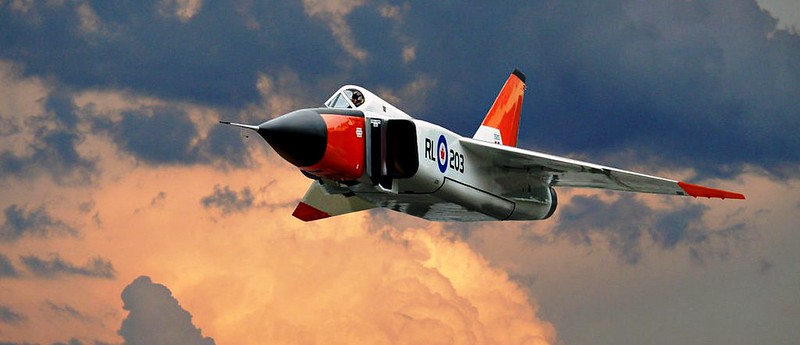In the world of aviation, innovation often means pushing the limits of technology, design, and imagination. While many aircraft have become legendary icons of the skies, there exists a fascinating category of lesser-known planes that introduced groundbreaking ideas only to be lost to history. These forgotten aircraft were remarkable in their time, showcasing advances in aerodynamics, propulsion, and structural design that would later become foundational to modern aviation. From asymmetrical designs and early jet propulsion systems to aircraft capable of vertical takeoff, these models dared to defy convention and explore the boundaries of what was possible.
Yet, despite their groundbreaking nature, many of these aircraft never reached widespread use or commercial success. Some were too ahead of their time to be fully appreciated; others faced technical or economic challenges that cut their journeys short. However, their legacies live on in the technologies and design principles they pioneered. In celebrating these innovative designs, we gain a greater appreciation for how far aviation has come – and how many of these forgotten ideas have influenced the aircraft we see today.
Contents
Aerodrome No. 5

The Aerodrome No. 5, designed by Samuel Langley in 1896, was one of the earliest powered flight experiments, predating the Wright brothers’ famous flight by several years. Built as a tandem-wing structure powered by a steam engine, it was capable of achieving short, sustained flights. Langley’s Aerodrome showcased an innovative understanding of lift and control, yet its design flaws prevented it from achieving longer flights. While ultimately overshadowed, Langley’s work paved the way for powered flight, inspiring future pioneers to push the limits of aviation technology.
Hughes H-4 Hercules

Nicknamed the “Spruce Goose,” the Hughes H-4 Hercules was a massive, eight-engine flying boat crafted primarily from wood due to wartime restrictions on metals. This aircraft was envisioned by Howard Hughes to be a long-range transport capable of carrying troops or supplies across the Atlantic. Despite its brief flight in 1947, it embodied forward-thinking engineering in its sheer scale and structural innovations. While it never entered production, the H-4 Hercules demonstrated the potential of giant flying boats and influenced the design of larger cargo and military transport aircraft.
Blohm & Voss BV 141

The Blohm & Voss BV 141 was an asymmetrical German reconnaissance aircraft from World War II, with a unique design featuring an off-center cockpit. Its unconventional layout aimed to provide optimal visibility for reconnaissance missions while maintaining the engine’s balance. Although it had remarkable flight stability and excellent visibility, the BV 141 was ultimately sidelined in favor of more conventional designs. However, its innovative approach to visibility and weight distribution remains influential, showcasing how nontraditional designs can fulfill specific mission requirements.
Boeing X-32

Developed by Boeing as a contender in the Joint Strike Fighter competition, the X-32 was designed with a distinctive delta wing and a large, single-air intake for improved maneuverability and stealth capabilities. Although Lockheed Martin’s X-35 ultimately won the contract, the X-32 incorporated pioneering features for agility and vertical takeoff capabilities. The X-32’s focus on single-platform versatility influenced later multi-role fighter jet designs and advanced stealth technologies, reflecting its impact on the evolution of combat aircraft.
Caproni Campini N.1

The Caproni Campini N.1 was an Italian aircraft that achieved one of the first successful flights using jet propulsion in 1940. Featuring an early ducted fan design, it was powered by a conventional piston engine driving a compressor to force air through a nozzle, creating thrust. Although relatively slow and inefficient compared to later jet engines, the Campini N.1 was an early exploration into jet propulsion, contributing to the eventual development of turbojet engines that revolutionized high-speed flight and commercial aviation.
Tupolev Tu-144

The Tupolev Tu-144, a Soviet supersonic passenger jet, was developed in parallel with the Concorde and became the world’s first commercial supersonic airliner. Despite technical challenges and a brief operational life, the Tu-144 pushed boundaries in aerodynamics, high-speed flight, and passenger transport. Though it faced reliability issues, its pioneering role in supersonic travel influenced later research into efficient high-speed aviation, and its legacy remains significant in supersonic transport development.
Avro Canada CF-105 Arrow

The CF-105 Arrow was a Canadian-built interceptor designed in the 1950s, incorporating cutting-edge avionics, delta wings, and supersonic capabilities. Known for its remarkable speed and altitude performance, the Arrow was designed to defend Canadian airspace against Soviet bombers during the Cold War. Despite its cancellation in 1959, the Arrow showcased remarkable engineering and design advances in aerodynamics and speed, leaving a lasting legacy on Canadian aerospace and inspiring generations of aviation innovation.
Vought V-173 “Flying Pancake”

The Vought V-173, commonly called the “Flying Pancake,” was an experimental fighter aircraft designed during World War II to take off and land in short distances. Its distinctive round, flat shape, and vertical winglets could achieve excellent lift and maneuverability at low speeds. Despite promising test flights, the unusual design was ultimately too radical for mainstream use. However, the V-173’s lift-enhancing innovations provided insights into STOL (short takeoff and landing) capabilities and inspired future designs in carrier-based aviation and VTOL technology.
Convair Model 118 ConvAirCar

The Convair Model 118, or ConvAirCar, was an experimental attempt in the late 1940s to combine a car with a detachable airplane. It represented an early exploration into “flying car” concepts. Designed to bring personal aviation to the masses, the Model 118 featured a compact design and detachable wings. While its ambitious goal of personal air travel remained out of reach, it inspired later concepts in personal air mobility, laying the groundwork for modern developments in urban air mobility and autonomous aerial vehicles.
Northrop YB-49 Flying Wing

The Northrop YB-49 was a jet-powered flying wing bomber developed by the United States Air Force in the 1940s. Known for its sleek design and low radar profile, it was an early exploration into stealth technology. The aircraft’s unstable flight characteristics and the lack of computerized control systems ultimately led to its cancellation. However, the YB-49 inspired future generations of flying wing aircraft, including the B-2 Spirit stealth bomber, showcasing the potential for reduced drag and radar visibility.
This article originally appeared on MyCarMakesNoise.
More from MyCarMakesNoise
20 High-Speed Trains Revolutionizing Global Transit

Discover the world’s fastest trains that redefine travel as we know it. From cutting-edge technology to breathtaking speeds, these marvels of engineering are revolutionizing transportation. Read More.
20 Must-See Luxury Yachts for the Ultimate Seafaring Journey

Embarking on a seafaring adventure aboard a luxury yacht is the epitome of elegance and relaxation. Whether you’re seeking serene ocean escapes or thrilling voyages, these top 20 luxury yachts offer unparalleled comfort, cutting-edge design, and world-class amenities. Read More.
25 Groundbreaking EVs That Revolutionized Sustainable Driving

Electric vehicles (EVs) have revolutionized the way we think about transportation, offering a greener alternative to traditional gas-powered cars. In this article, we explore 25 EVs that have paved the way for sustainable driving. Read More.














